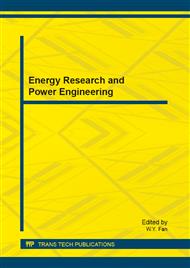p.519
p.524
p.528
p.534
p.540
p.546
p.550
p.554
p.558
Numerical Study on Flight Stability of Fin-Stabilized Shell of Small Length-Diameter Ratio and High Aspect Ratio
Abstract:
In order to obtain the flight stability of a flip-out tail fin shell of small length-diameter ratio and high aspect ratio, this paper calculates the supersonic viscous flow of the shell with the finite volume method, when the angle of attack exists. The six degree of freedom simulation is carried out with the previous results. The characteristics of the flow field around the shell ,static stability and dynamic stability are analyzed. The results show that lift coefficient can be described by linearity rule. Position of pressure center, which accounts for 10.3% of the total shell length, ranges from 0.3305 to 0.3945m. When initial disturbances are between 5and 9rad/s, maximum attack angle, which is apart from about 20m in the muzzle, is less than 5.5°. The amplitude of the angle of attack attenuates very fast and is close to 0° in 100m away.
Info:
Periodical:
Pages:
540-545
Citation:
Online since:
July 2013
Authors:
Price:
Сopyright:
© 2013 Trans Tech Publications Ltd. All Rights Reserved
Share:
Citation:


